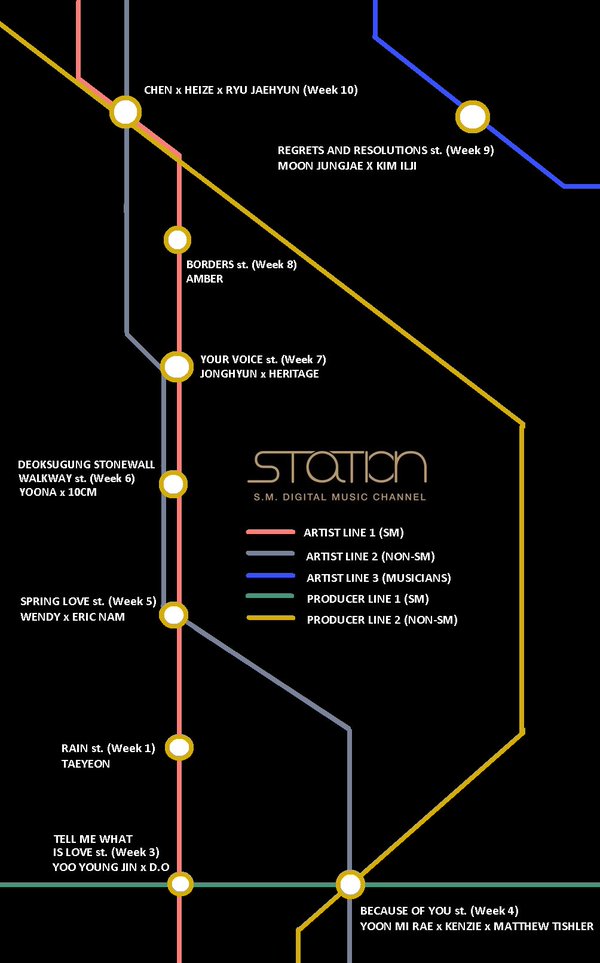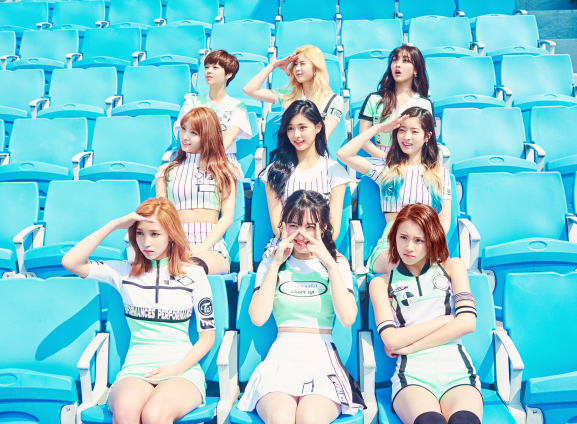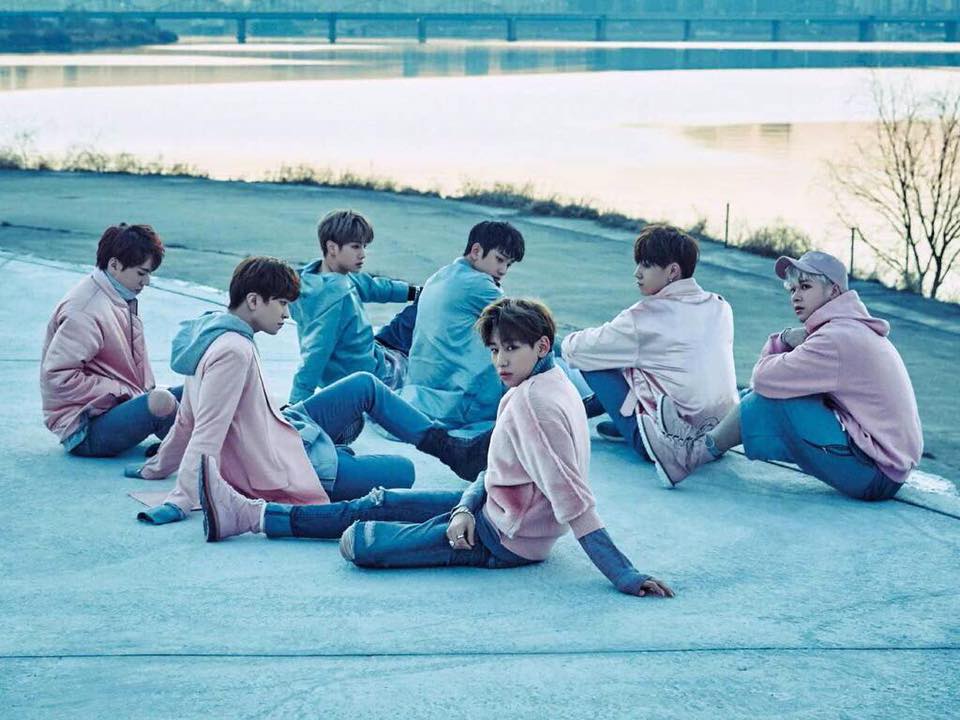2016 was a year full of ups and downs. There were many great comebacks, debuts, and plenty of releases. There were also disbandments, contract terminations, and other goodbyes. With that in mind, there’s only one question left to ask: in a year as turbulent as 2016, who came out on top?
2016 was the year that inched SM Entertainment closer to world domination
 In late January, Lee Soo-man announced five new projects, two being Neo Culture Technology and SM Station. NCT focuses on glocalizing” K-pop by debuting boy groups with members from different countries. So far, three of these groups have debuted – NCT U, NCT 127, and NCT Dream – and the success of changing line-ups and sub groups remains to be seen.
In late January, Lee Soo-man announced five new projects, two being Neo Culture Technology and SM Station. NCT focuses on glocalizing” K-pop by debuting boy groups with members from different countries. So far, three of these groups have debuted – NCT U, NCT 127, and NCT Dream – and the success of changing line-ups and sub groups remains to be seen.
Their second major venture, SM Station, was a digital music channel that released singles from SM artists every week. Some were solos, while most were collaborations. Artists experimented with different genres, and SM got to work with other labels.
Although many SM artists (Luna, Tiffany, Ryeowook, Lay) debuted as soloists, in 2016 SM focused a on two acts in particular — Taeyeon and Exo — who both enjoyed major successes this year.
By now, Exo has cemented their place as one of SM’s most successful artists. The group’s third album, Ex’Act, sold almost 800,000 copies since its release in June. “Monster” was Exo’s most successful single of 2016, reaching #1 on the Gaon and World Digital charts. The song also earned Exo nine music show wins. The album’s other lead single,”Lucky One” was a top-five hit on the charts, peaking at #5 and #3 respectively. Following the SM tradition Ex’Act‘s repackage, Lotto, dropped in August and reached #10 on the Billboard World Albums chart. “Lotto” was #2 on the Gaon charts, as well as a number-one hit on the Billboard World Digital Songs chart. Exo rounded out the year with the special winter album, For Life — which saw impressive sales without any music show promotions.
Exo also broke new ground when SM introduced the group’s first sub-unit, Exo-CBX, consisting of Chen, Baekhyun, and Xiumin. The unit debuted in October with the mini-album Hey Mama! In early November, Exo-CBX began promoting the title track of the same name on music shows, though the sub unit didn’t see the same level of popularity as Exo’s other releases in 2016.
 While Exo saw spectacular group success, Taeyeon continued to break ground a soloist. Taeyeon had already become popular with the public as both a member of Girls’ Generation, and her debut in 2015 with I proved her prowess as a soloist. Throughout 2016, she had three major releases, the first being “Rain“. The song was SM Station’s inaugural single, selling more than 1M copies. SM’s foray into EDM inspired the June release of Why — which debuted at #1. The mini-album included top-ten singles “Why” and “Starlight“. To help promote Why, Taeyeon held her “Butterfly Kiss” concert series in Seoul and Busan. The concerts were the first held by a Korean female soloist that was still a member of an active girl group. Taeyeon’s third and final release was the single “11:11”, released in November. It peaked at #2 and sold more than 600,000 copies.
While Exo saw spectacular group success, Taeyeon continued to break ground a soloist. Taeyeon had already become popular with the public as both a member of Girls’ Generation, and her debut in 2015 with I proved her prowess as a soloist. Throughout 2016, she had three major releases, the first being “Rain“. The song was SM Station’s inaugural single, selling more than 1M copies. SM’s foray into EDM inspired the June release of Why — which debuted at #1. The mini-album included top-ten singles “Why” and “Starlight“. To help promote Why, Taeyeon held her “Butterfly Kiss” concert series in Seoul and Busan. The concerts were the first held by a Korean female soloist that was still a member of an active girl group. Taeyeon’s third and final release was the single “11:11”, released in November. It peaked at #2 and sold more than 600,000 copies.
In 2016, SM’s main marketing approach was being anywhere and everywhere all at once. NCT was an opportunity for SM to expand its brand beyond South Korea, where it already has solid ground. SM Station capitalized on the company’s domestic success and brought in profit from streaming.
Such a strategy brings constant presence and competition in the industry. If several SM artists promote at the same time, heavier profits flow in all at once. One flaw in this, though, is that some artists may end up on the back burner in favor of larger acts. Red Velvet had spectacular comebacks in 2016, but they felt underwhelming without proper promotion. The group has the potential to be much greater, but SM needs to pay them more attention.
JYP Entertainment was another successful Big Three company and had one of its best years in a while.
 JYP put a lot of his eggs into the basket that was his wunderkind Twice. For some situations, it would be a worrisome strategy to invest most of one’s money into an act, but not in this one. Given Twice’s successful debut in 2015, it’s expected that JYP put the group at the forefront in 2016. He knows they are marketable and appeal to the public, especially since they formed on a reality show.
JYP put a lot of his eggs into the basket that was his wunderkind Twice. For some situations, it would be a worrisome strategy to invest most of one’s money into an act, but not in this one. Given Twice’s successful debut in 2015, it’s expected that JYP put the group at the forefront in 2016. He knows they are marketable and appeal to the public, especially since they formed on a reality show.
After Twice’s debut, it was a matter of capitalizing on their success, which is exactly what the agency did in 2016 with everything from CF deals to not one but two successful comebacks. In April, the group returned with “Cheer Up“, the title track of their second mini-album Page Two. Page Two sold almost 42,000 units in its first week, the largest for any girl group in 2016. The following month, it sold more than 100,000 copies, an astounding feat for a rookie group. “Cheer Up” was one of the biggest hits of the year, selling more than 2 million units. It reached #1 on a lot of music charts and was the fastest girl group MV to reach 100 million views on YouTube.
In October, Twice returned with “TT” off of their third mini-album Twicecoaster: Lane 1. In its first week, Twicecoaster sold some 165,000 copies, the fastest for any girl group in 2016, and debuted atop many music charts. “TT” also debuted at #1 on all music charts, achieving “all-kill” status.
While it’s wise to invest in the most lucrative artists, JYP should have focused some of it’s energy on looking out for the company’s other active artists. 2016 was the last year fans would see 2PM promote before they enlist in the military in 2017. Yet, the group waited until September to release their final full album (for the time being), Gentlemen’s Game. Despite some loss of domestic popularity, the group still maintains outstanding sales in Japan. Their last Japanese album, Galaxy of 2PM, sold more than 100,000 copies. Between April and June, 2PM went on a sold-out tour throughout Japan. In late October, they performed two shows at the Tokyo Dome.
 JYP’s other male group, GOT7 might not be as popular as Twice in Korea, but they certainly are strong overseas. Over the summer, they peaked at #45 on the Billboard Artist 100 with Fly, one of the highest for any K-pop act. The group also performed sold-out concerts on their first world tour, “Fly”. In February, GOT7 released their first Japanese album, Moriagatteyo, and it peaked at #3. Japan is one of the largest music markets in the world, and JYP could strike a lot of gold if he promotes them further — especially in the wake of 2PM.
JYP’s other male group, GOT7 might not be as popular as Twice in Korea, but they certainly are strong overseas. Over the summer, they peaked at #45 on the Billboard Artist 100 with Fly, one of the highest for any K-pop act. The group also performed sold-out concerts on their first world tour, “Fly”. In February, GOT7 released their first Japanese album, Moriagatteyo, and it peaked at #3. Japan is one of the largest music markets in the world, and JYP could strike a lot of gold if he promotes them further — especially in the wake of 2PM.
Above all, Twice’s 2016 success signals a generational shift for JYP. Before their debut, the Wonder Girls were the flagship JYP girl group. Even as they transition into a senior group — and possibly exit from JYP — their legacy is not diminished. Songs like “Tell Me” and “Nobody” helped make K-pop popular in South Korea and overseas. Had it not been for their U.S. advancement, the group might have even been the biggest girl group in Korea at the moment. Nevertheless, the Wonder Girls will remain an important figure in JYP history, whether they leave the company or not.
YG tried to promised a year of changes, but instead gave more of the same.
As most know, T.O.P confirmed that he was enlisting into the military in 2017. As a result, YG promised that Big Bang would release one last album before he goes. Before MADE, the group released singles throughout 2015 and 2016. Tracks such as “Bang Bang Bang“, “Loser“, and “Let’s Not Fall in Love” all peaked at #1 and sold more than 1M copies. In December, Big Bang finally released the entire MADE album. Having waited so long, many fans felt disappointed with the final release — especially when the album only featured three new tracks.
 This year also brought some new blood to the YG roster. Black Pink debuted in August achieved popularity almost immediately after their debut. “Whistle” debuted at #1, and earned the girls their first music show win two weeks after their debut. Soon after their debut, Black Pink modeled for various brands — but they failed to branch out to variety until their comeback promotions for “Playing With Fire.” Despite criticisms of YG’s promotional tactics, the buzz around the group was enough to win them the coveted Best New Artist at the 2016 MAMAs.
This year also brought some new blood to the YG roster. Black Pink debuted in August achieved popularity almost immediately after their debut. “Whistle” debuted at #1, and earned the girls their first music show win two weeks after their debut. Soon after their debut, Black Pink modeled for various brands — but they failed to branch out to variety until their comeback promotions for “Playing With Fire.” Despite criticisms of YG’s promotional tactics, the buzz around the group was enough to win them the coveted Best New Artist at the 2016 MAMAs.
One of the most bittersweet aspects of Blackpink’s debut was that it felt like ‘out with the old, in with the new’. YG was counting on their marketability and success to decide if he should disband 2NE1 following the departure of Minzy and Bom’s two-year hiatus. Now, this isn’t to say that Blackpink is to blame for their disbandment, because they’re not. If anything, it’s all YG’s fault. The announcement was abrupt, and left Blackjacks disappointed and without closure.
The areas where YG fell most short in 2016 were in promotions and media play. The company boasts one of the most publicly recognizable rosters in K-pop, and yet big name comebacks like Akmu, Ikon, and Winner felt swept under the rug in favor of articles about CL‘s American “debut” and Black Pink. In 2017 YG needs to up its public relations game to avoid controversies like those that came with the mixed messages of Taehyun‘s hiatus and eventual contract nullification. The public lost a lot of trust in YG this year, and now it’s up to the company to earn it back.
Companies tapped into the nostalgia for yesteryear, marketing the return of several first-generation idol groups.
In April, Sechs Kies reunited on “Infinity Challenge” for their first concert together in a long time. In May, the group (sans Ko Ji-yong) signed a contract for a comeback under YG Entertainment. Two of the members, Lee Jae-jin and Kang Sung-hoon, signed their own solo contracts. In September, the group held a comeback concert and went on a nationwide reunion tour in South Korea. In December, they released a compilation of past hits and new single “Three Words”. In January 2017, the group will be holding a concert in Seoul.
Sechs Kies wasn’t the only group making their return to the industry, though. In October, S.E.S. announced their own comeback under their original label SM Entertainment. In late November, SM released the group’s schedule, beginning with an SM Station single. The group also had a reality show for the group, and a concert at the end of the year. In January 2017, S.E.S. will release their first album in more than a decade.
The marketability of first generation idol groups relies heavily on nostalgia, and it seems most of these comebacks are more to gift fans something special than to re-claim the industry. Either way, they’ve been relatively well received by fans and the public alike.
A world away from nostalgia, K-pop’s future lies in groups from smaller companies.
I f it wasn’t already clear that BTS was on an upward path, 2016 was definitely the year that made it known. Young Forever, the finale to Most Beautiful Moment in Life, reached #1 on the Gaon charts, and #107 on the Billboard 200. Despite only promoting the song for a week, “Fire” won first place on all three of the major music shows. BTS was the first K-pop act to top Billboard’s Social Media 50 chart and even received their own Twitter emoji. The album earned BTS “Album of the Year” at the Melon Music Awards.
f it wasn’t already clear that BTS was on an upward path, 2016 was definitely the year that made it known. Young Forever, the finale to Most Beautiful Moment in Life, reached #1 on the Gaon charts, and #107 on the Billboard 200. Despite only promoting the song for a week, “Fire” won first place on all three of the major music shows. BTS was the first K-pop act to top Billboard’s Social Media 50 chart and even received their own Twitter emoji. The album earned BTS “Album of the Year” at the Melon Music Awards.
Although Young Forever was a great era for BTS, Wings solidified them as a definite group to watch. Released in November, Wings received acclaim and broke many records. The album peaked at #26 on the Billboard 200 chart, the highest for any Korean artist, and stayed for two weeks. In December, BTS also received the Artist of the Year award at the 2016 MAMAs.
Another group on the rise in 2016 was G-Friend, who debuted in 2015 with “Glass Bead”, along with “Me Gustas Tu”. In January, the group released their third EP Snowflake, which reached #2 on the charts. The title track “Rough” peaked at #1, and earned G-Friend 15 music show wins, the most for any girl group in 2016. The song set a record for the longest time atop the Melon chart before being overtaken by Twice’s “Cheer Up”. In July, G-Friend released “Navillera”, the title track of their first full-length album, LOL. The song was the group’s second #1, earning them 14 music show wins. With 29 overall music show wins over the course of 2016, G-Friend became the winningest girl group within one year. At the end of the year, G-Friend received the MAMA for Best Dance Performance – Female Group.
Despite Pledis Entertainment‘s infamous reputation, Seventeen has made a name for themselves. Known as “self-producing” idols, the group experienced many firsts in 2016. In April, Seventeen released their first full-length album, Love & Letter. The album peaked at #1, the first since their debut. The album’s title track, “Pretty U”, earned the group their first music show wins on The Show. Through July and August, Seventeen went on their first Asia-Pacific tour. In early December, their third mini-album, Going Seventeen, debuted at #1. The title track, “Boom Boom“, earned them their first public broadcast win on Music Bank.
 For the time being, it’s fair to say that these groups could definitely be the faces of the next K-pop wave. All three of them have made a name for themselves, each in their own right. By promoting on a consistent and healthy basis, these groups can lead the new generation. I can definitely see all three groups growing even further in 2017, and look forward to their future endeavors.
For the time being, it’s fair to say that these groups could definitely be the faces of the next K-pop wave. All three of them have made a name for themselves, each in their own right. By promoting on a consistent and healthy basis, these groups can lead the new generation. I can definitely see all three groups growing even further in 2017, and look forward to their future endeavors.
So, who came out on top? In all honesty, I would have to say that 2016 was the year of SM and of the rookie girl group.
As notoriously maniacal and stress-inducing as the company can be, SM was also clever and tactical this year. Aside from the entire debacle with Kris, Luhan, and Tao, 2016 was a great year for the company. SM Station was a smart initiative that produced a lot of great music. It’s sad that the project only lasts for a year, and it would be great if the company decides to expand it beyond that. NCT still seems like it’s all over the place, but here’s to hoping that SM tries to iron out some of the kinks in 2017.
As for rookie girl groups, Twice and G-Friend were at the head of the pack. They were both huge trends in 2016, and I’m confident the two will continue their success into 2017. Another rookie girl group that stood out was I.O.I. despite only lasting a year. One thing that does make me happy, though, is that some of the members have something planned in the future (Pledis Girlz, Chungha‘s solo debut, etc.).
Overall, 2016 was a great year, and I’m pretty excited to see what 2017 has in store. Happy New Years, readers!
(Billboard [1] [2], Korea Herald [1] [2], Korea Times, Yonhap News [1] [2], Yibada, Images via SM Ent., JYP Ent., YG Ent., Big Hit Ent., Source Music)


